With the vision to enable socially, economically, environmentally sustainable aged care and support for older people in Australia, the UTS Ageing Research Collaborative (UARC) is led by UTS academics working in collaboration with aged-care providers, health services, government agencies, consumer groups and researchers from other universities. Its aim is to identify evidence-based solutions to the issues facing ageing and aged care.
Reshaping aged care in Australia
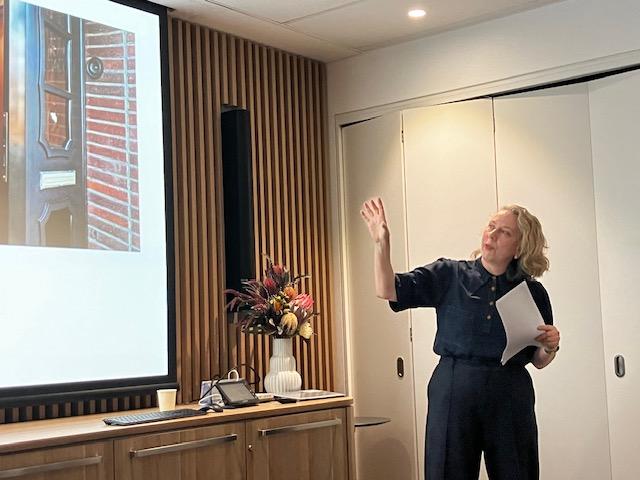
Caption
Professor Phillippa Carnemolla speaking at the UTS Ageing Research Collaborative (UARC) seminar series
Led by Deborah Parker, Professor of Nursing Aged Care (Dementia), School of Nursing and Midwifery, UTS Faculty of Health and David Brown, Professor, Accounting Discipline Group, UTS Business School, UARC brings together expertise in health, science, economics, business, law, humanities, social sciences, design and engineering.
In the first of a new monthly research seminar series that will be held in RES Hub, David opened the session by reflecting on its objectives.
“Probably the first thing we want to do with this seminar series is to provide proximity between us as scholars,” he explained.
The other thing Deb and I talked about when planning the series was the question of how we as scholars develop capacity in our individual and collective skills and knowledge so that we can work in a more transdisciplinary way, considering that many of the problems we're wrestling require this.
“As Co-Directors, Deb and I have the great privilege of seeing all the research that goes on at UARC and we get to know all the people that are involved in it. We wanted to build a space in which we can come all together so that everybody gets visibility over what people are doing and has an opportunity to share their work.”
David said that the series will feature research presented at varying stages of development.
“Some sessions will focus on papers for critical analysis and feedback to go into journals. Others will be to explore early stage ideas, or related to policy work,” he said.
“The other thing Deb and I talked about when planning the series was the question of how we as scholars develop capacity in our individual and collective skills and knowledge so that we can work in a more transdisciplinary way, considering that many of the problems we're wrestling require this.”

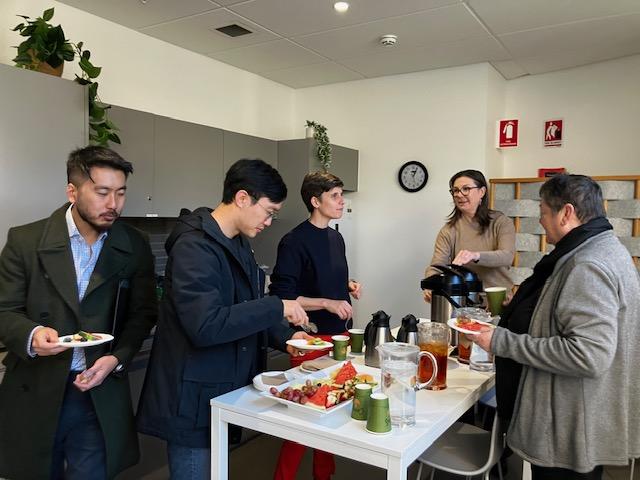
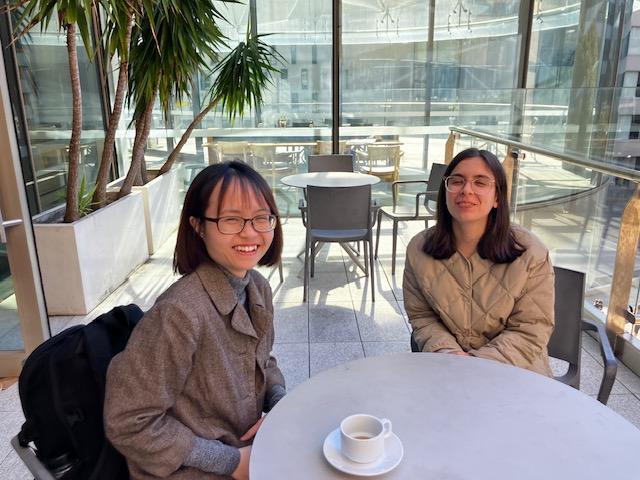
David then introduced Professor Phillippa Carnemolla, the UARC Innovation & Design Theme Co-lead, who seeks to improve the homecare services provided to older Australians through in-home modifications and improving communities.
“Phillippa's particularly interested in how the built environment shapes the way aged care services are provided and experienced, and for any of us who have aging parents, we see the significance of her research every day,” he said.
Phillippa began her presentation by discussing some of the foundational research she has conducted over the past 8 years as a post-doctoral researcher at UTS, framed by the question: how do built environments shape the way aged care services are provided and experienced?
“In asking this question, I'm able to find answers to others, such as how important is housing and neighbourhoods to a sustainable home care sector?” she said.
From bathrooms to front doors to gardens and pathways, Phillippa investigates how a location, the type of house and who people live with impacts on their experience of living at home as they age.
“All these things are critical to quality aged care services,” she said.
“What about housing tenure? What if an older person’s housing situation is not stable or secure enough for them to receive aged care services at home? And what are people’s connections to local communities?”
In asking such questions and looking at aspects of the built environment, Phillippa hopes to help us be better prepared to deliver and receive aged care in our communities, the place where the predominance of aged care is going to be delivered and received.
“When you look at the data from 2017 to 2024, you can see that the numbers of people using Home Care has massively increased,” Phillippa said.
Phillippa gave examples of how she frames such questions with current data as well as changes in the dynamics of care in the home, such as the quality and access to amenity in a local area and what happens when you bring technology into the relationship between the built environment and an older person.
From the introduction of automated lighting systems in the home to how accessible are streetscapes, shopping precincts, transport and health systems, Phillippa is interested in what makes it easier for older people to continue living at home. Having safe access to shopping precincts is critical.
When you think about communities as a broader system, community care is dispersed. It's essentially variable care that's distributed across really wide areas. So the way that we connect our spaces is critical, as is the way that we design our sites.
“These are important social spaces. Places where people not only buy food, but also access medications. And the local shopping centre might provide the only convivial encounter someone has each week when speaking with someone at a shop,” she said.
In terms of the built environment, Phillippa wants to understand how these shopping spaces should be designed.
“And even more importantly, we have learnt how critical the streetscapes and the parking places are as the means of getting to these places. Because you only need a broken footpath, and an older person won’t go to the shops.”
Another piece of her work speaks to the importance of being connected across community care.
“When you think about communities as a broader system, community care is dispersed. It's essentially variable care that's distributed across really wide areas. So the way that we connect our spaces is critical, as is the way that we design our sites,” Phillippa explained.
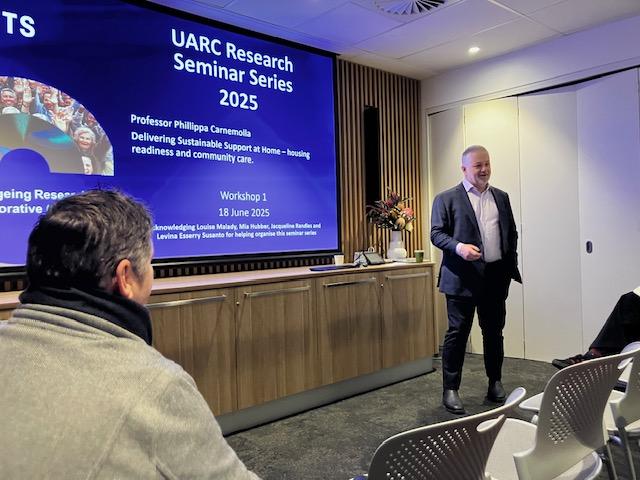
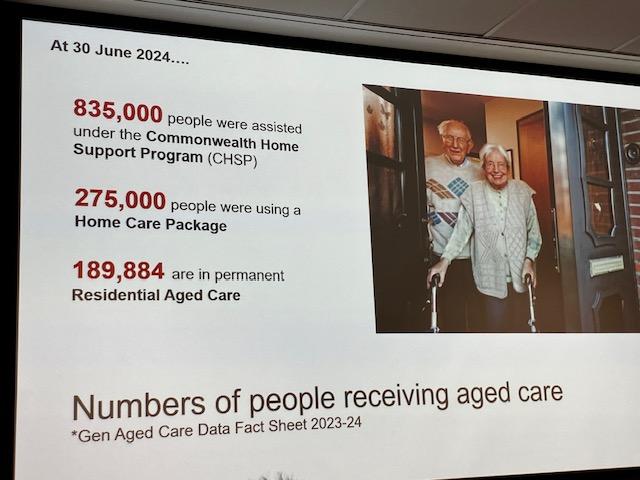
Over the next three years, Phillippa will investigate how to develop a sustainable Support at Home program as part of Australia's housing system, with a focus on aged care workers.
“We know that people want to receive care at home. We know that housing design has the capacity to reduce the amount of care needed and to increase the potential for self-care as people get older. But what we don't know, and what's really overdue, is an understanding of the full breadth of what it is to have a person's home as a workplace for home care staff,” she said.
Phillippa plans to build evidence that informs the benefits, the risks, the efficiencies and the inefficiencies of home care, with a focus on the lived experience of people that work in other people's homes.
Whose space is it anyway?
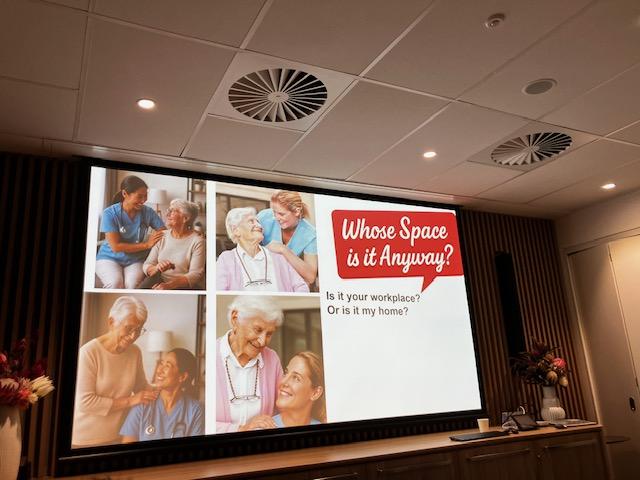
In conclusion, Phillippa asked us to consider the perspectives of older people receiving aged care workers in their homes, and of those workers.
“Is this my home? Or is it your workplace?” asked Phillippa, adding that this question frames homes as a bit of a contested environment because it's not a neutral space.
“The environment has to serve different groups of people in different ways, and while it's my space because it's my home, you also deserve to be safe as aged care staff.”
Phillippa will examine such complexities through interviews to explore what's working and what's not, as intersections of built environment, neutral space, of some non-neutral spaces and contested spaces.
Is this my home? Or is it your workplace?
She is concerned that as wait lists for care get longer, there are going to be more Australians with unmet care needs living at home.
“In this context, my research will bring into the frame the role of our built environments and the role of design in making this problem smaller and hopefully alleviating just a small part of aged care need, making care safer to deliver for aged care staff and also more efficient for a more sustainable Support at Home program,” she said.
Attend the next Research Seminar
The next UARC Research Seminar will be from 1-2pm on 23 July 2025 in RES Hub where the Hon. Professor Mike Woods and Louise Malady will discuss policy impact.
Understand Australia’s aged care sector
On 20 June 2025, UARC released the seventh edition of its Australia’s Aged Care Sector Report. The report includes detailed analyses and commentary, drawing on data from StewartBrown, the Department of Health, Disability and Ageing and the Australian Institute for Health and Welfare.
Insights in this edition include:
- Growth in waitlist for home care packages
- Home care viability declines in the lead-up to the new Support at Home
- Emerging challenges in Support at Home pricing
- Higher Star Ratings linked with improved occupancy and financial outcomes
- The costs of accommodation services are critical viability risks in residential aged care, with pricing reforms likely to have uneven regional effects
- The proposed liquidity thresholds risk impacting on new construction of residential care homes
- Opportunities for risk-proportionate regulation to support the sustainability and resilience of the aged care system.
Download the report from UTS Opus: Australia’s Aged Care Sector: Mid-Year Report 2024-25
Learn more about UARC